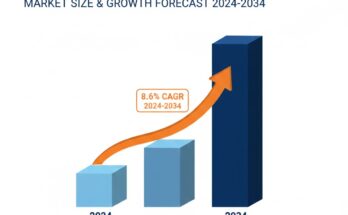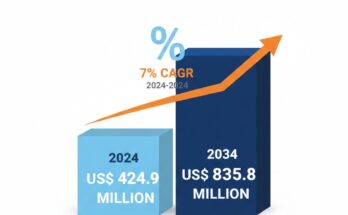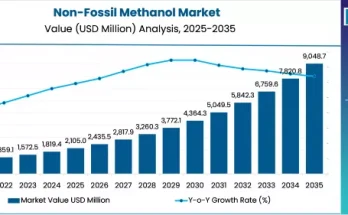As industries increasingly prioritize quality, safety, and efficiency, non-destructive testing (NDT) has emerged as a critical tool for maintaining structural integrity without compromising the tested component. The global NDT market is poised for significant expansion over the coming decade, driven by rising investments in infrastructure, energy, aerospace, and manufacturing. With evolving regulatory standards and increasing emphasis on operational safety, the need for reliable inspection technologies is at an all-time high.
NDT plays a pivotal role in preventing costly failures, reducing downtime, and ensuring compliance with international quality standards. From ultrasonic to radiographic testing, the market is evolving rapidly with the integration of advanced digital tools, making it an essential pillar of modern industrial operations.
Market Overview
Non-destructive testing refers to a range of techniques used to evaluate the properties of a material, component, or system without causing damage. These methods are essential for identifying flaws and defects early in the production cycle or throughout the asset lifecycle, ensuring performance and durability.
As global industries adopt smarter, leaner production systems, the relevance of NDT is further amplified. Traditional testing methods are now being complemented by real-time data analysis, robotics, and artificial intelligence, offering enhanced accuracy and reduced inspection times.
The NDT market comprises a broad spectrum of techniques such as ultrasonic testing (UT), magnetic particle testing (MT), liquid penetrant testing (PT), radiographic testing (RT), eddy current testing (ET), and visual inspection. These methods are increasingly being adopted across a range of industries due to their precision and cost-efficiency.
Key Market Drivers
1. Growing Emphasis on Infrastructure Development
The surge in global infrastructure projects—ranging from bridges and highways to rail networks and power plants—necessitates reliable safety assessment tools. NDT technologies offer a dependable means to inspect and maintain structural health, ensuring long-term reliability and safety.
2. Rising Demand from Aerospace and Defense Sectors
Aircraft manufacturing and maintenance require rigorous inspection protocols to avoid catastrophic failures. The aerospace sector extensively utilizes NDT for component testing, stress analysis, and fatigue evaluation, which has become vital to quality assurance in the industry.
3. Industrial Automation and Digitalization
Digital transformation in industrial operations has led to the integration of NDT with automation systems. Real-time monitoring, predictive analytics, and remote inspections powered by IoT and AI are reshaping the market landscape.
4. Regulatory Compliance and Safety Standards
Stringent safety regulations across sectors such as oil & gas, automotive, and power generation are propelling the adoption of NDT solutions. Regulatory bodies mandate frequent inspections to minimize risks and improve asset management practices.
Regional Insights
North America: Pioneering Technological Integration
North America leads the global NDT market due to early adoption of advanced testing technologies, robust regulatory frameworks, and a strong industrial base. The region’s well-established oil & gas sector, coupled with investments in aerospace innovation, continues to drive demand for sophisticated NDT methods.
Europe: Regulatory Stringency Encouraging Adoption
Europe follows closely, with strict safety and environmental standards compelling industries to adopt regular non-destructive testing. Countries such as Germany, France, and the UK are focusing on modernizing infrastructure and renewable energy assets, creating strong growth opportunities for the NDT market.
Asia-Pacific: Emerging as a High-Growth Region
Rapid industrialization in countries like China, India, South Korea, and Japan is fueling the demand for reliable inspection techniques. The expansion of manufacturing capabilities and investments in transport infrastructure are creating a favorable environment for the adoption of NDT technologies in this region.
Latin America & Middle East: Expanding Oil & Gas Sector
Regions such as Latin America and the Middle East are also seeing increased uptake of NDT solutions, primarily driven by the oil & gas and petrochemical industries. The focus on reducing operational hazards and maintaining pipeline integrity is accelerating market penetration in these regions.
Key Trends & Forecast
Adoption of AI and Machine Learning in NDT
One of the most transformative trends in the NDT market is the use of artificial intelligence and machine learning algorithms. These technologies are enhancing defect detection, automating analysis, and improving diagnostic accuracy across multiple testing methods.
Emergence of Portable and Wireless Devices
Modern inspection environments demand flexibility. The development of lightweight, portable, and wireless NDT devices is making it easier to conduct inspections in remote or confined spaces without compromising accuracy.
Increasing Use of Drones for Remote Inspections
Unmanned aerial vehicles (UAVs) are being increasingly employed for visual and thermal inspections, especially in hard-to-reach areas such as wind turbines, offshore rigs, and large industrial complexes. This trend is streamlining inspection processes while ensuring operator safety.
Rise of Predictive Maintenance Solutions
Industries are shifting from reactive to predictive maintenance strategies. Integrating NDT with asset health monitoring systems enables timely identification of potential failures, reducing downtime and optimizing performance.
Strategic Collaborations and Mergers
To expand service capabilities and technological expertise, market players are entering strategic partnerships and mergers. This trend is fostering innovation and facilitating the global expansion of NDT service providers.
Applications & End-Use Outlook
Oil & Gas
Given the high risk associated with energy production and transmission, the oil & gas sector remains a major consumer of NDT services. Inspection of pipelines, pressure vessels, and offshore rigs ensures compliance and safety in this critical industry.
Aerospace
In aerospace, NDT ensures the integrity of aircraft components, engines, and structural elements. The sector demands high-precision inspection to meet stringent airworthiness standards and to extend the lifecycle of aircraft.
Automotive
The automotive industry leverages NDT during production and quality control to detect micro-cracks, voids, or dimensional inconsistencies in engine parts and critical components, thus enhancing vehicle reliability and passenger safety.
Construction & Infrastructure
NDT plays a vital role in the inspection of bridges, tunnels, and other civil structures. By detecting internal flaws and monitoring material degradation, these methods support maintenance planning and prevent failures.
Power Generation
Whether it’s nuclear, thermal, hydro, or renewable energy systems, NDT is critical for inspecting turbines, boilers, and storage tanks. It helps utilities maintain consistent output while avoiding unplanned outages.
Competitive Landscape
The NDT market features a mix of global giants and specialized service providers. Companies are focusing on:
-
Advancing digital inspection platforms
-
Expanding service portfolios through acquisitions
-
Developing custom solutions for industry-specific needs
-
Investing in training and certification programs
Notable players in the market are investing heavily in R&D to stay ahead in the innovation curve, while strategic partnerships are enabling them to reach untapped regions and cater to evolving customer requirements.
In addition to traditional equipment providers, software and analytics companies are entering the NDT space, offering integrated inspection solutions that align with modern Industry 4.0 frameworks.
Conclusion
Non-destructive testing stands at the intersection of safety, efficiency, and innovation. As global industries move towards smarter, more resilient operations, the importance of reliable inspection technologies is set to grow exponentially. NDT not only enhances quality assurance but also supports sustainability by extending the life of assets and reducing material waste.
Organizations seeking to future-proof their operations should view NDT as more than a compliance requirement—it is a strategic enabler of operational excellence. With evolving technologies and increasing regulatory pressure, the next decade will be defined by a smarter, more connected approach to industrial testing.
Accessing comprehensive market analyses and leveraging emerging tools can help stakeholders make informed decisions, adopt best practices, and remain competitive in a rapidly transforming industrial landscape.



